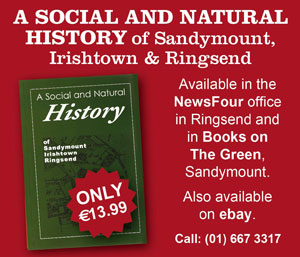
Bewley’s Hotel on the Merrion Road is one of the most infamously grand buildings in Dublin. Sumptuous and eye-catching to the passerby, the design of the building is also provocative to history students, and no doubt the odd conspiracy theorist, as it is distinctly marked by motifs and designs associated with the tradition of Freemasonry.
A window in the shape of a hexagram, and the letter ‘G’ surmounted by a compass and a set square are especially prominent.
The building itself dates back to 1881 or 1882 (sources vary) but the construction was certainly completed by 1882. It was designed and built by the firm of McCurdy and Mitchell, an architecture and civil engineering partnership based in Lincoln Place.
The specific purpose was to house the Masonic Female Orphan School of Ireland. This unlovely, functional title masks a revolutionary social idea that Masonry introduced to Ireland. The school as an institution was founded in 1792, to provide support and education to girls aged 10 to 15 who were orphaned. However, as Morgan McCreadie explains, orphan then was not quite what orphan now would mean.
“In these cases, orphans were girls whose fathers had died while they were young,” McCreadie says. “Since the mother’s role was limited in society at the time, this meant the girls could effectively be reduced to destitution. They had no prospects.”
McCreadie is Assistant to the Grand Secretary of the Grand Lodge of Ireland. He explains that the idea of educating girls in the late eighteenth century was very radical, and was part of the overall agenda of Masonry, which has promoted public education since its inception. “There is also the fact that something had to be done to provide for the children of our brothers who had died prematurely.”
The school moved around from site to site over the first hundred years of its history. The records of the first 50 years are sparse, but it is understood that initially it housed and educated about 20 girls. The girls were instructed in what would have been regarded at the time as ‘appropriately feminine pursuits’, so they might eventually make a living as governesses and teachers.
The school was moved to a property near Charlemont Street around 1801, and again over the years to addresses in Ranelagh, Jervis Street and South Richmond Street.
The construction of the purpose-built site on the Merrion Road was a cause of great celebration. The school persisted until 1970, at which point the change in educational and social standards presented the Irish Lodges with a problem. The school would have to grow its population of boarding students considerably to remain sustainable. Several plans were discussed, including resorting to the form of a conventional fee-paying school, but in the end the property was sold to the RDS, who renamed it Thomas Prior House.
The Grand Lodge themselves constructed an office block near their Molesworth Street address and leased the space, to fund a charitable grant scheme for students in need of support, a scheme which continues to this day.
The connection to the building now owned by Bewley’s is a continuing source of pride. McCreadie explains that the stained glass windows that once hung in the Drill Hall to the building’s left, representing allegorical figures of Faith, Hope, Charity and Prudence, now decorate their Hall in town, as proud reminders.
By Rúairí Conneely



